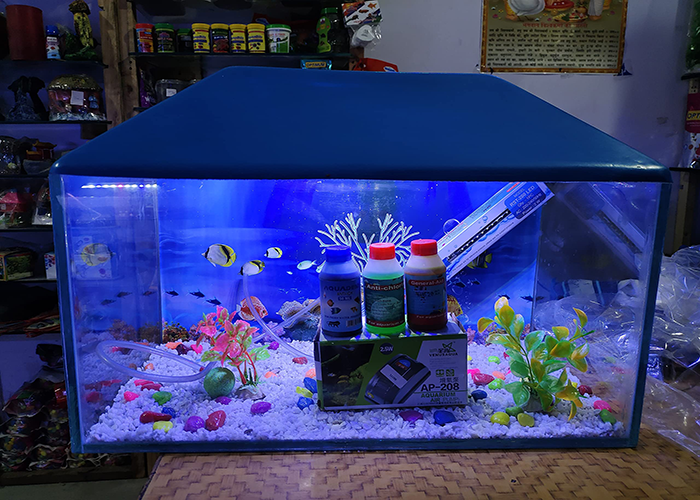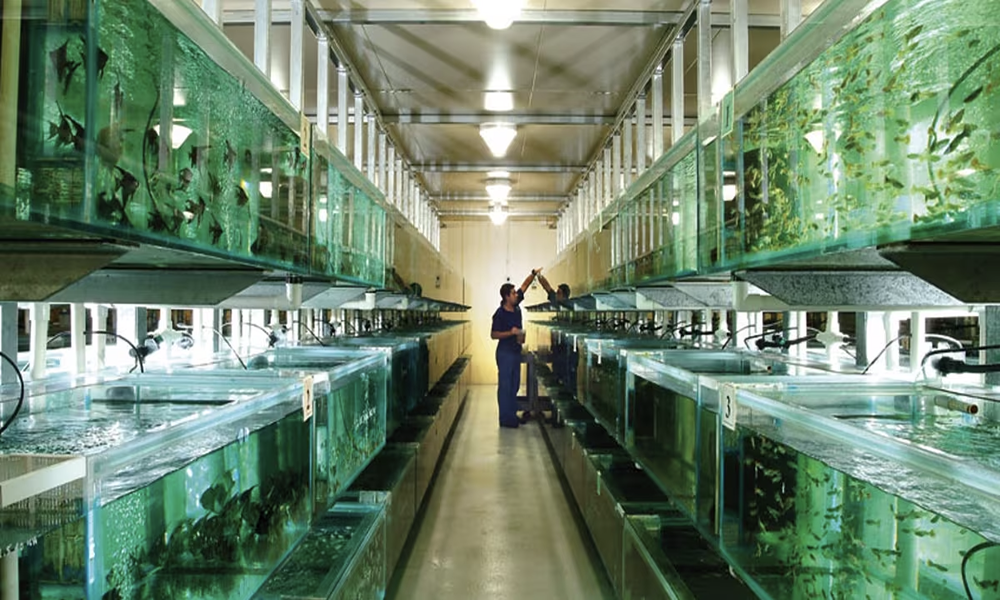Water and Wastewater Treatment in Fishing and Aquarium Industries Using STP, ETP, WTP, WWTP, RO, and Industrial Solutions

India has a rich tradition in fishing and aquaculture, making it one of the top fish-producing countries globally. The fishing and aquarium industries contribute significantly to food supply, export, and ornamental trade. With freshwater and marine resources, India's fisheries sector supports millions of livelihoods, especially in coastal and inland regions.
In Maharashtra, these industries and major cities like Mumbai, Ratnagiri, and Pune thrive along the Konkan coast. The aquarium industry, particularly in urban areas, caters to hobbyists, interior decorators, and public aquariums. This growing sector depends heavily on high-quality water and efficient waste management to ensure aquatic health and environmental balance.
Water Is Vital for Fish Breeding, Aquatic Health, Habitat Maintenance, and Aquarium System Operation
Water quality is the foundation of healthy aquatic ecosystems. Water is required for breeding, rearing, and sustaining fish and other marine organisms in fisheries and aquariums. It is a habitat, oxygen supplier, and waste diluter, making constant filtration and aeration essential.
For aquariums, water must be crystal clear and free of harmful chemicals to support ornamental fish. Water is used in hatcheries, ponds, tanks, and feeding operations in fish farms. Temperature, pH, salinity, and dissolved oxygen must be maintained at optimal levels, requiring frequent water replacement or treatment to ensure sustainability and animal health.
Feeding, Cleaning, Water Changes, and Medical Dosing Generate Wastewater in Aquatic Environments
Activities in these industries that generate wastewater include overfeeding, fish waste accumulation, decomposing organic matter, and frequent cleaning of tanks and filters. Antibiotics and disease control chemicals added to water can also affect water quality over time and create toxic discharge if not appropriately treated.
"Clean water isn't just a requirement in fisheries and aquariums—it's the environment life depends on. Managing it responsibly is the difference between growth and collapse."
Aquariums often need partial water changes, which release water with nitrates, ammonia, and phosphates. In fisheries, runoff from ponds and hatcheries contains uneaten feed, fish feces, and sometimes pesticides or disinfectants. If discharged untreated, this wastewater can damage surrounding ecosystems and contaminate local water sources.
Aquatic Wastewater Contains Fish Waste, Feed Residue, Ammonia, Chemicals, and Pathogens
The wastewater produced in these industries is often rich in organic waste and nutrients like nitrogen and phosphorus. Fish excreta, leftover feed, and microbial buildup can lead to high levels of ammonia, nitrites, and nitrates, which are toxic if not removed. In closed systems, this buildup occurs quickly and must be managed.
In addition to organic pollutants, water can contain chemical residues from medications, water conditioners, and disinfectants. Pathogens may also be present in contaminated systems. The complexity and variability of this wastewater demand robust, multi-stage treatment processes to maintain aquatic health and meet regulatory norms.
Biological, Mechanical, and Chemical Filtration Systems Help Treat and Recycle Aquatic Wastewater Safely
Wastewater from these operations is typically treated using mechanical filtration (for solid waste), biological filtration (to convert toxic ammonia to safer nitrates), and chemical filtration (using activated carbon or ozone). In fish farms, settling tanks and biofilters are standard for removing suspended solids and ammonia.
For aquariums, filtration systems often combine all three methods in compact units. Larger public or commercial facilities may use UV sterilizers or ozonators to control pathogens and maintain water clarity. These systems must run continuously to prevent toxic buildup and maintain a stable aquatic environment.
RO, Biofiltration, UV, and Automation Enable Smart Water Use in Fishing and Aquarium Operations
Advanced technologies are increasingly being adopted to minimize freshwater usage and reduce operational costs. Recirculating Aquaculture Systems (RAS) use biological and mechanical filters to reuse over 90% of water, making them ideal for sustainable fish farming. RO units and UV filters further enhance water quality.
Automated systems monitor water temperature, oxygen levels, and chemical balance in public aquariums and breeding facilities. These smart-systems reduce human error and increase the efficiency of water use and reuse. This shift toward technology-driven sustainability is helping the industry align with global environmental standards.
Custom WTP, ETP, RO, and Biofilter Systems for Aquatic Industry Water Management Needs
We offer comprehensive water treatment solutions tailored specifically for the fishing and aquarium industries. Our expertise includes designing and installing compact RO systems, biofiltration units, settling tanks, and effluent treatment plants that handle both organic and chemical waste effectively.
We conduct site evaluations to understand water usage patterns and design efficient systems that reduce waste and improve water quality. Whether you're managing a fish hatchery, a large aquarium, or a decorative pond, our solutions ensure optimal aquatic health, regulatory compliance, and long-term operational savings.
Conclusion: Water Management Is Critical to the Sustainability of Aquatic Industries

Sustainable Water Management in Hospitals Ensures Safety, Compliance, and Environmental Stewardship
The fishing and aquarium industries depend entirely on water—not just in quantity, but in quality. With growing environmental awareness and stricter regulations, these industries must embrace adequate water and wastewater treatment strategies. Technologies like RO, STP, ETP, and biofiltration support clean operations and promote resource efficiency. Our tailored treatment systems help aquatic industries in India and Maharashtra protect their operations, marine life, and the environment—all while maintaining profitability and compliance.

